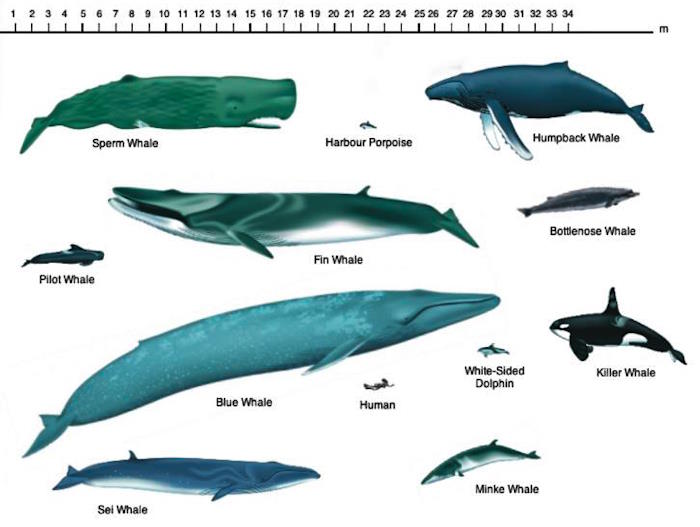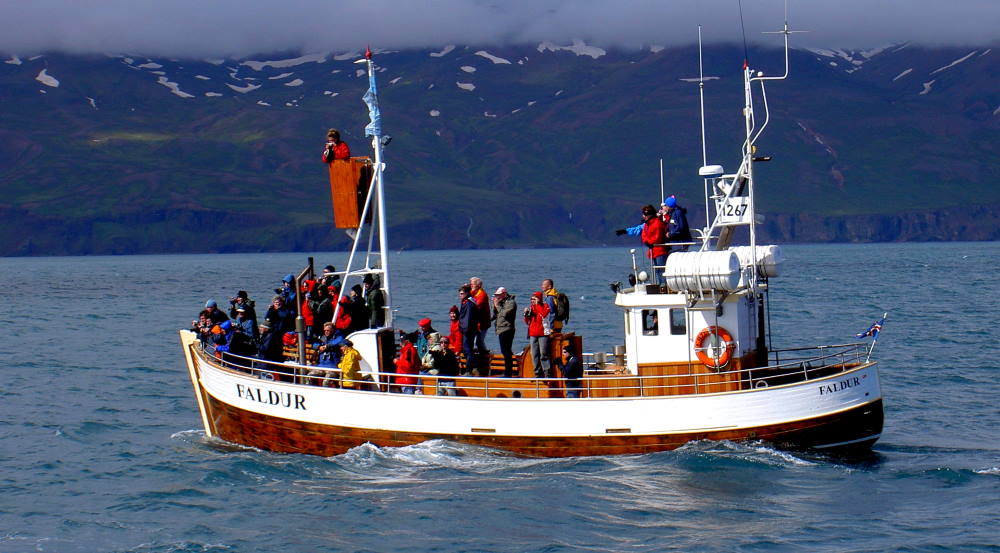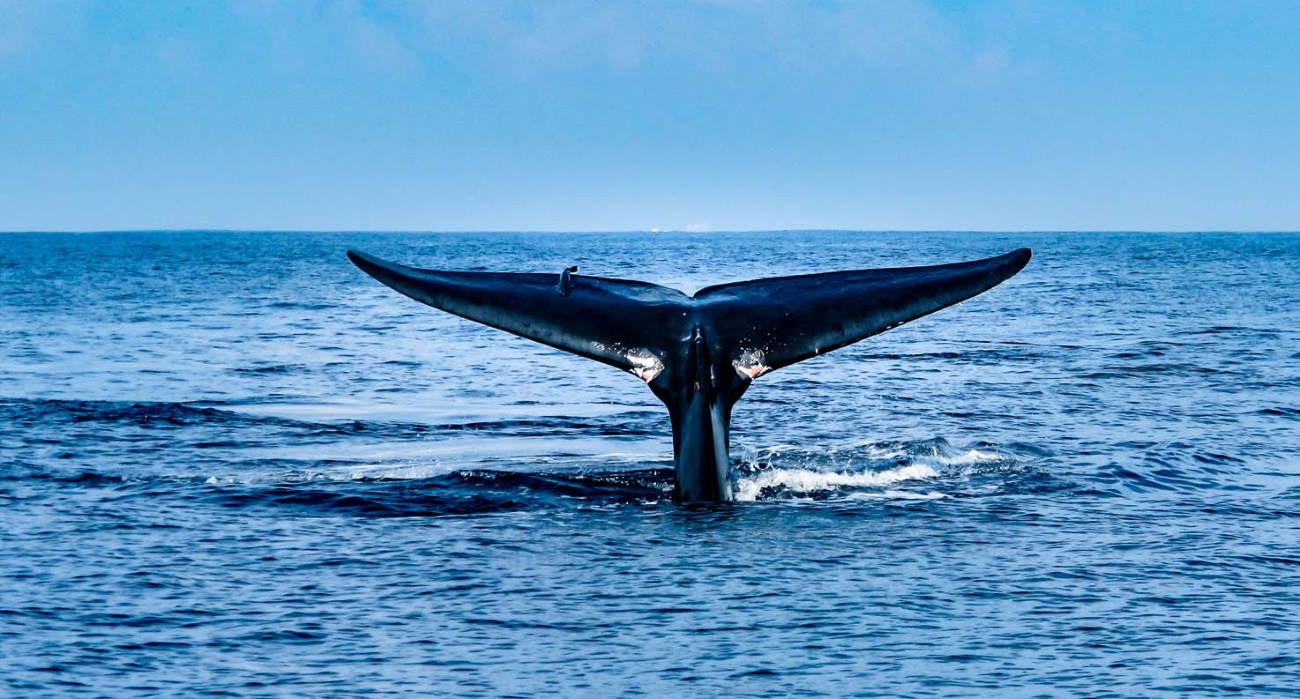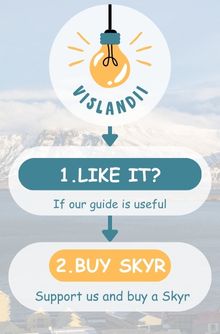There are not so many easily accessible places in the world where you can see whales, and Iceland is one of them.
Everything you need to know about whale watching you can find in this article!
In fact, whales can be observed in almost any country that has access to the oceans. For example USA, Mexica, Portugal, in many countries of South America, not to mention the numerous islands in the middle of the ocean. But for European residents, Iceland is the most easily accessible place with all the necessary infrastructure for whale watching.
Strangely enough, whale safari in Iceland appeared quite recently - in 1991, tourists went on a whale watching tour for the first time. And now 300 thousand people go on whale safari every year.
The abundance of sunlight in summer, as well as the presence of cold and warm currents in the shallow waters of the Icelandic fjords, are factors that create a favorable environment for many species of krill (small crustaceans) and fish, which, in turn, serve as excellent food for 23 species of whales that can be found off the coast of Iceland.
What kind of whales can be found in Iceland
It depends on the time of the year and location, but the Common minke whale is the most common: it can be seen in any port at any time of the year.
So, here is a list of the most common species of whales and dolphins that you can see on the tour in Iceland:
- The minke whale is the most common large whale in Icelandic waters. They often migrate here in the summer, and some stay for the winter. Compared to some other species of whales, they are, of course, small - they reach more than 9 meters in length. Minke whales are shy, but since they are numerous, you can see them from almost any port where excursions start, including Reykjavik.
- Humpback whale - Humpback whales also spend the summer in Iceland, but unlike minke whales, they are known for their gregarious behavior and acrobatic tricks. On the tour, you can catch (if you are lucky) the moment when they jump, flap their tail and fins, or feed their offspring. The northern tour operators, who conduct excursions starting from Akureyri and Husavik, have had seasons when no tour was complete without at least one humpback whale.
- White-beaked dolphin are the most widespread dolphin species in Iceland. They live in flocks from several individuals to hundreds and live not far from the coast throughout the year. Although white-beaked dolphins are quite large, they jump beautifully above the surface of the water, bend and generally like to play.
- Porpoises are the smallest species of whale. Porpoises are found all year round, but only experienced observers see them: they are small and rather shy, so they appear on the surface of the water mostly one at a time or in small groups, for a very short time. However, while feeding the cubs or when threatened, they can chase along the surface of the water: an exciting sight.
- Killer whales - About 5,000 individuals of the largest dolphin species live near Iceland, coming closer to the shore in the summer months. Killer whales, can appear near the ship during any excursion, but they are intentionally harder to find than other species: They move around all the time and don't spend much time in one place. But if you do meet them, their acrobatic tricks and huge size will definitely please you: watching them is a pleasure. They are most often found in the herring-rich waters of the Eastern Fjords, around the Snaifedlsnes Peninsula and along the southern coast. One of the most famous killer whales in the world, Keiko, was caught off the Westman Islands. Keiko is known for playing the lead role in the movie "Save Willy".
The two largest animals on the planet, the blue whale and the fin whale, are much rarer, but there are chances in summer. Sai whales are also occasionally noticed. In addition to them, sometimes (but quite rarely) you can meet Sperm whales, Pilot whales, Beak Whales (Cuvier's beaked whale).

Where to see whales in Iceland
- Husavik in northern Iceland is called the European "whale capital". In addition, Husavik has the only whale museum in the world. During tours from Husavik, the probability of meeting a humpback whale is greater than in other places.
- Akureyri
- Snaifedlsnes Peninsula - there is a high probability of meeting killer whales in winter
- The Old Port of Reykjavik tours depart all year round. The most common are minke whales, porpoises and white-faced dolphins
The best time of the year for whale safari
Some species of whales live off the coast of Iceland all year round, while others are constantly migrating.
Toothless whales migrating between the world's oceans, like to spend the winter near the equator, breeding, and in summer they prefer to stay closer to the poles. During whale tours in April-October in Iceland, there are chances to see the largest whales in the world.
In summer, whale watching is generally more enjoyable. The weather is better, the sea is calmer and storms are much less frequent. The percentage of successful tours is higher.
In winter, white-faced dolphins and porpoises are often found. However, large whales sometimes swim into the waters of Iceland in winter, so you can also hope for a minke whale, and sometimes a humpback whale.
However, the advantage of winter tours applies only to certain locations. Breida Fjord, for example, is located between the Western Fjords and the Snaifedlsnes Peninsula, and its waters serve as a wintering ground for herring. Such an abundance of food attracts predators, which means that here the probability of seeing an oceanic super predator — a killer whale — is much higher in winter than in summer.
Herring in the waters of Breida Fjord also attracts humpback whales that have stayed for the winter: they often gather here.
In northern Iceland, the probability of finding belugas increases in winter. Although these curious herd animals do not live in Iceland all the time, but swim only occasionally, this still happens when they move from the Arctic to waters with less ice.
How much does a whale safari cost
The price strongly depends on the type of boat/ship you will sail on, the place of departure and the time of year.

The most popular option is a small boat for 20-25 people.
A more expensive option is a high-speed motorboat (speedboat) for 10 people. Such a boat is faster than a regular boat and can get closer to the whales.
Usually, the duration of such a safari will be about 3 hours.
The price starts from 70 euros by boat and from 130 euros by motorboat. Sometimes you can find a little cheaper options.
Examples of safari tours, the price for January 2025 (it can be different due to season and exchange rate). You can read the details on the links (prices in euros vary depending on the exchange rate of the Icelandic krona):
- Whale watching tour from Reykjavik - 3 hours, boat - from 95 euros
- Traditional whale watching tour from Husavik - 3 hours, boat - from 87 euros
- Humpback whales in Eyjafjord | Whale safari from Akureyri - 3 hours, boat - from 91 euros
- Whale watching | Snaifellsness - 3 hours, boat - from 102 euros
- Whale watching in Holmavik in the Western fjords from Holmavik - 2 hours, boat - from 87 euros
- Puffins and whales | RIB boat tour from Husavik - 2 hours, motor boat - from 152 euros
- Whales, puffins and the Reykjavik coast: close-up - 2 hours, motorboat - from 181 euros
Other tours can be viewed here: https://guidetoiceland.is
What to take on a whale safari and how to dress
- Dress as warmly as possible, very often there is a strong cold wind at sea. You will almost always be given a special waterproof and warm rainsuit. But you should have your own shoes, preferably waterproof ones. Waves often splash onto the deck.
- If you want to take photos or videos, then you need a waterproof camera case. It is best to take a zoom lens.
- If you have binoculars, be sure to take them with you.
It is not recommended to go on this tour for children under 7 years old, people with heart disease or back or spine problems, seasickness, as well as pregnant women.
How are whale watching tours going?
Tour operators are usually asked to arrive at their office 30 minutes before the start of the tour. You will be offered tea and coffee, and at the same time a pill for seasickness. If you are not sure of yourself, it is better to take a pill than to spend the next 3 hours in the toilet.
After the whole group has gathered, you will go to the ship or boat, where you will definitely be given waterproof pants and jackets. After all, even if the weather is good outside, there may be a strong wind at sea, and it is generally difficult to hide from sea spray.
Depending on the place from which you start, you will spend some time moving a little further from the shore. If you have taken a combined whales + puffins tour, then at the beginning you will most likely be taken to some cliff where puffin colony lives.
And so the search for whales began... It is quite possible that you will immediately see whales, or you may have to move away. The captain keeps a very sharp eye on the horizon and will always warn you about the whales that have appeared, but you should be on your guard yourself.
Many companies give a 100% guarantee that you will see whales, and even if you suddenly fail, they provide the opportunity to use the next tour for free.
Most likely you will see whales, but it is worth understanding that it will not look like in national geographic photos. Most likely you will see a fountain, the back of a diving whale, its tail, maybe if you choose a small boat you will find yourself very close to a diving whale. In any case, a whale jumping out of the water is a great success!
Usually, somewhere in the middle of the tour, you will be offered a hot coffee or cocoa and a bun, which is very pleasant after 1.5-2 hours in a chilly wind.
Most of whale watching tours are conducted in English.


